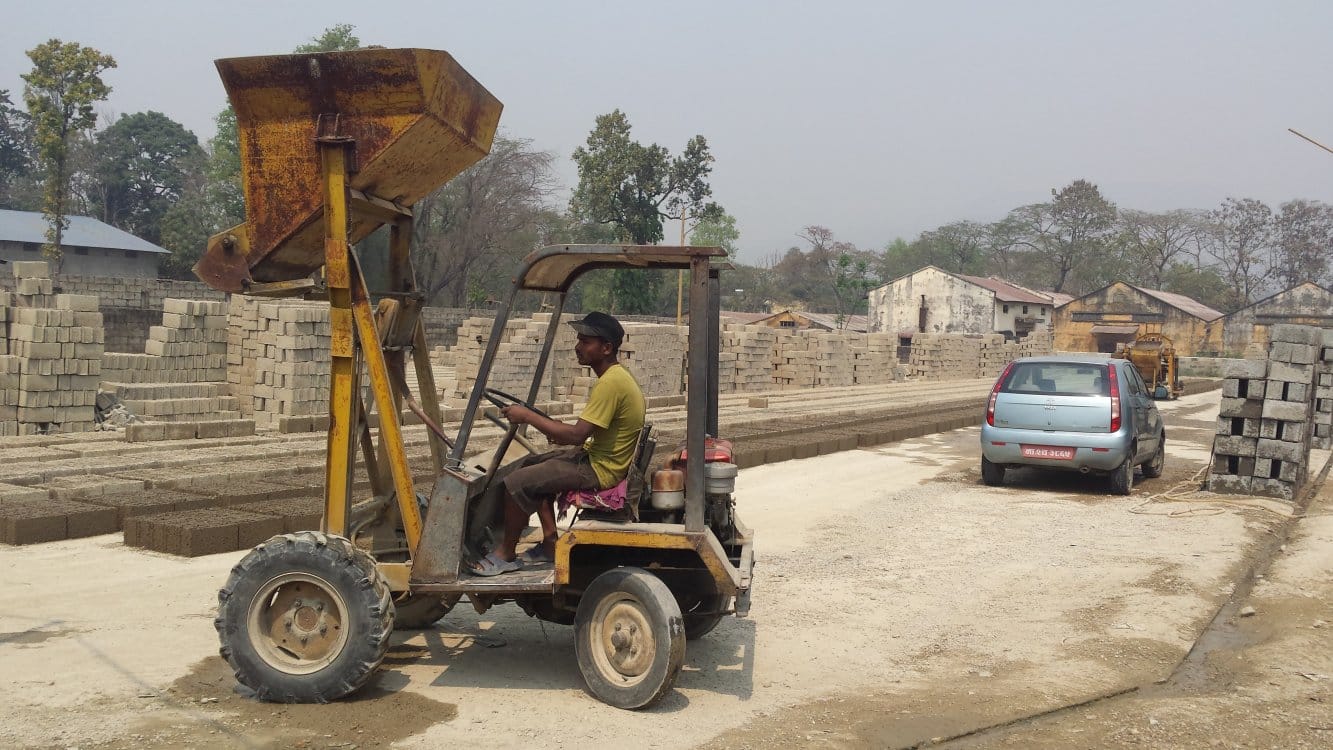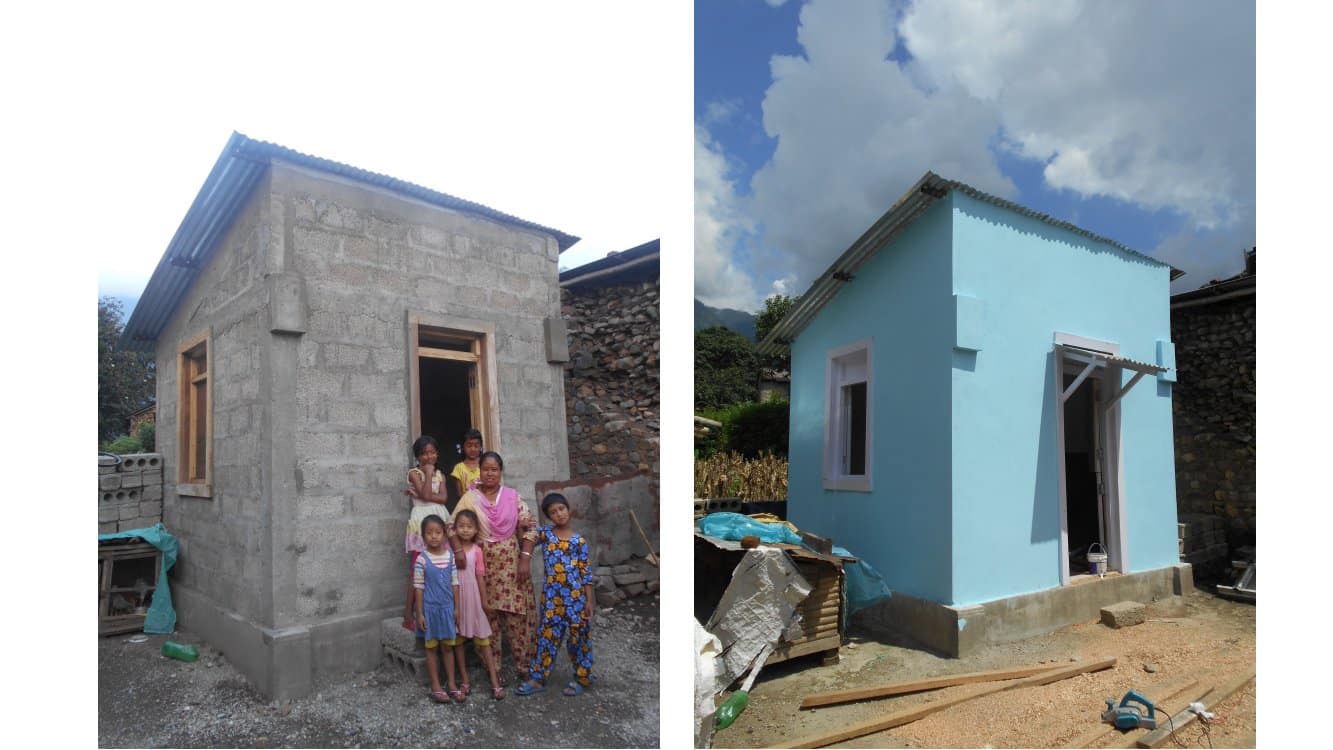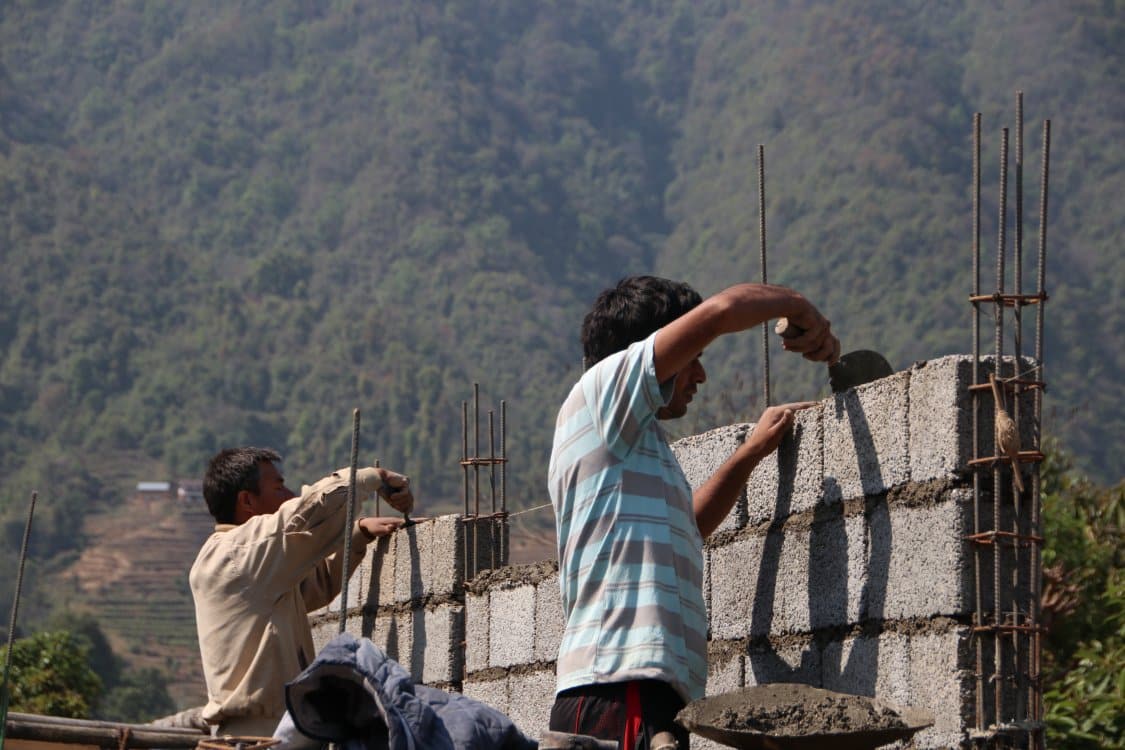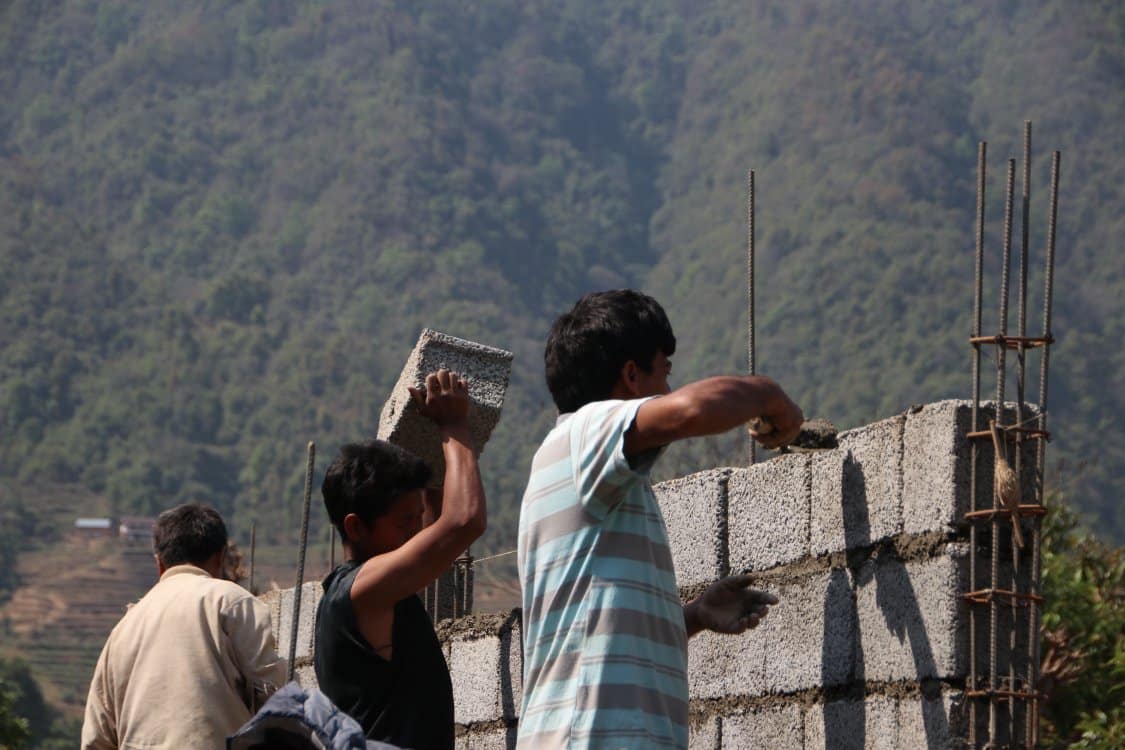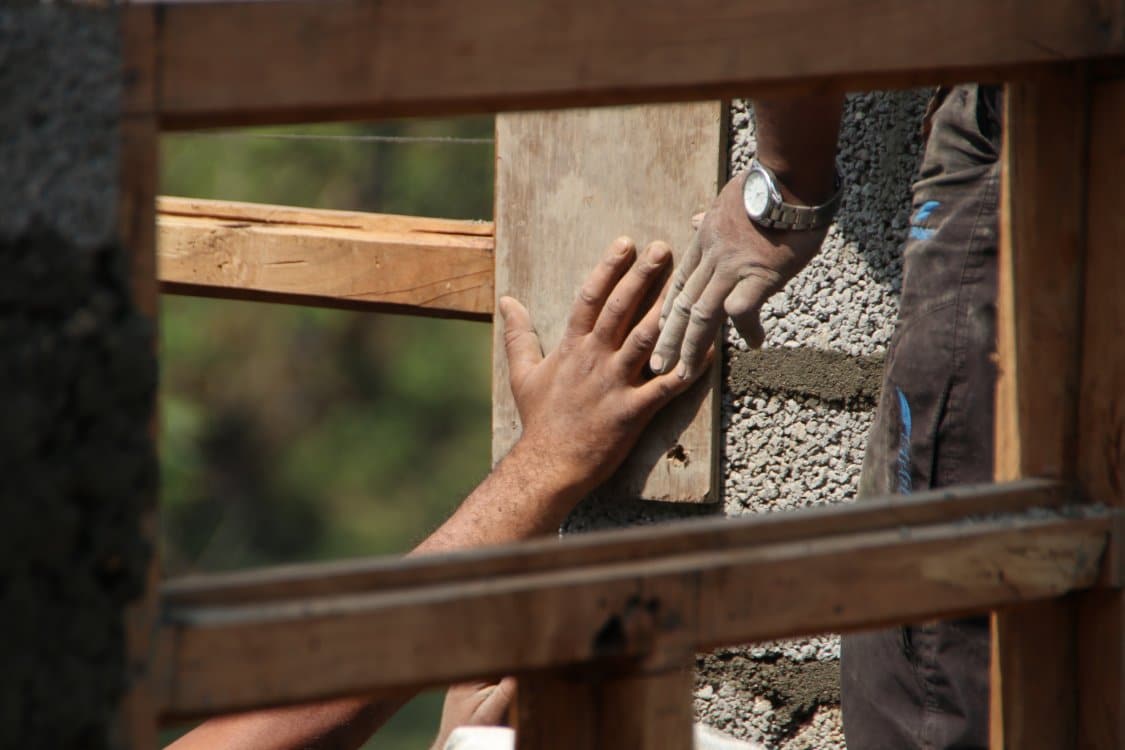Seismic-Resistance
As a third prototype, it was decided to test the concrete block technique, as this material is often used in the village, but incorrectly. In this case, Awasuka planned to introduce the “confined masonry” technique, a very inexpensive and effective seismic-resistant technology, which is used all over the world and in Nepal is still not very well known. The main problem with local houses made of concrete blocks is that they are not properly binded. The “Confined Block” technique allows the whole building to be tightly held together, making it resist earthquakes efficiently.
Finally, the results of the prototype construction showed that the “Confined Block” technique was the cheapest and fastest to execute, while also offering easy-to-build seismic-resistant features and good thermal performance. That’s why this technique was selected for the following new houses, while also being approved by the Government of Nepal, thus making it available nationwide.
IMPORTANT: After many months of negotiations, in January 2018 the NRA (Nepal Reconstruction Authority) approved Awasuka’s 2- and 4-room Confined Block system, with different roofing solutions, and which was adapted to rural lifestyle and existing materials in the villages. This government approval makes our building system available to anyone across the country.
Awasuka blocks
To build block houses, the government requested load-bearing capacity tests of the concrete blocks that were being used. Awasuka had to manufacture them following the NRA (Nepal Reconstruction Authorithy)requirements, as these were not met by local manufacturers. The “Awasuka Blocks” performed very well in Pathlaiya Materials Lab.

